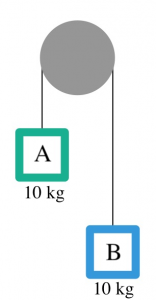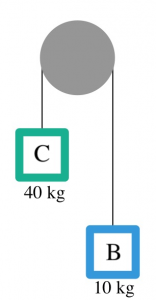Discussion 3
Instructions: Upload your work as a pdf document. All responses must be typed. Any calculations must be done using Latex, an equation editor, or typed. You can insert diagrams and pictures where appropriate but pictures of your hand written responses and calculations will not be accepted.
Free Body Diagrams
- Draw a free body diagram to represent all of the forces acting on a book that is at rest on a table.
- What are the features of a good free body diagram? What is the best way to represent the interaction itself? Why is the length of each vector important?
- How should the length of the arrows representing each force compare for the book on the table? Why?
- Let’s place a second book on top of the book on the table. Draw a free body diagram for each book. Which forces are of equal magnitude?
- None of the forces on the diagram of the first book should show up on the diagram of the second book and vice versa. Why is this?
- What type of force does the top book apply on the bottom book? Why would it be inaccurate to say that the weight of the top book acts on the bottom one?
- How does the free body diagram of the lower book compare to the free body diagram you drew in question 1? Which forces changed and which stayed the same?
Tension
- In figure 1, blocks A and B are connected with a massless string which is hung on an ideal pulley. The system is motionless due to Block A being held at rest. Describe the motion of the blocks if the force holding Block A at rest was removed. Why do the blocks behave this way?

- Draw a free body diagram for each of the blocks. Are the diagrams consistent with your description of the motion of the blocks?
- In figure 2, Block A has been replaced with Block C. Like figure 1, the system starts off as motionless with Block C being held at rest. What happens when the force holding Block C at rest is removed?

- Draw free body diagrams for Block B and Block C after the force holding them at rest is removed. Are the diagrams consistent with your description of the motion of the blocks?
